Atlantic Hurricane Milton Intermediate Advisory Number 16A issued at Wed, 09 Oct 2024 05:48:49 +0000 ...MILTON FORECAST TO MAKE LANDFALL ON THE GULF COAST OF FLORIDA LATE TONIGHT AS A DANGEROUS MAJOR HURRICANE... ...WEATHER CONDITIONS EXPECTED TO BEGIN DETERIORAT... Additional Details Here.

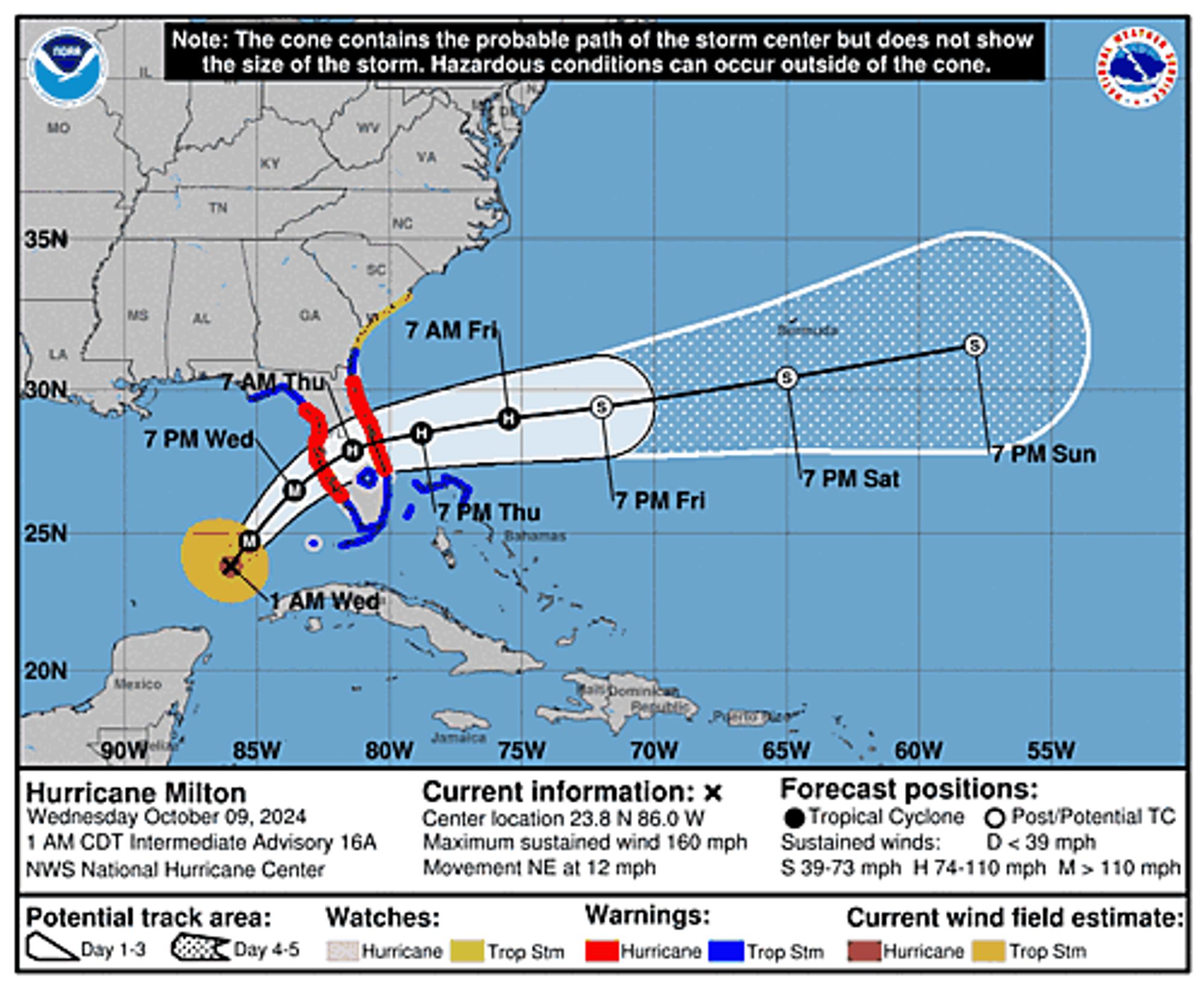

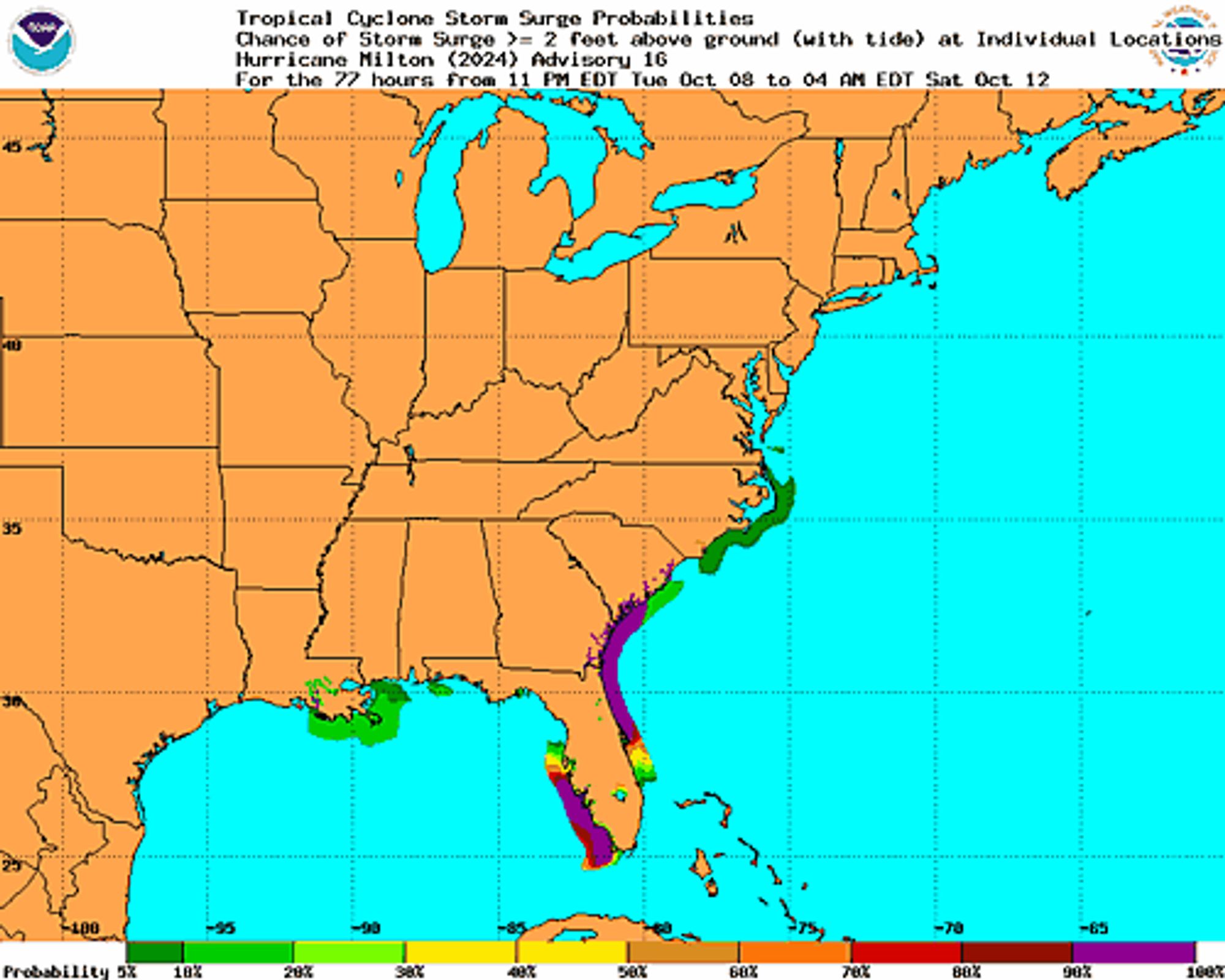
Tropical Cyclone Statement issued October 8 at 11:31PM EDT by NWS Jacksonville FL Additional Details Here.

Tropical Cyclone Statement issued October 8 at 11:18PM EDT by NWS Tallahassee FL Additional Details Here.

Tropical Cyclone Statement issued October 8 at 11:26PM EDT by NWS Melbourne FL Additional Details Here.

Tropical Cyclone Statement issued October 8 at 10:59PM EDT by NWS Miami FL Additional Details Here.

Tropical Cyclone Statement issued October 8 at 11:13PM EDT by NWS Key West FL Additional Details Here.

Atlantic Hurricane Milton Advisory Number 16 issued at Wed, 09 Oct 2024 02:41:51 +0000 ...MILTON EXPECTED TO MAKE LANDFALL ON THE GULF COAST OF FLORIDA LATE WEDNESDAY AS A DANGEROUS MAJOR HURRICANE... Additional Details Here.



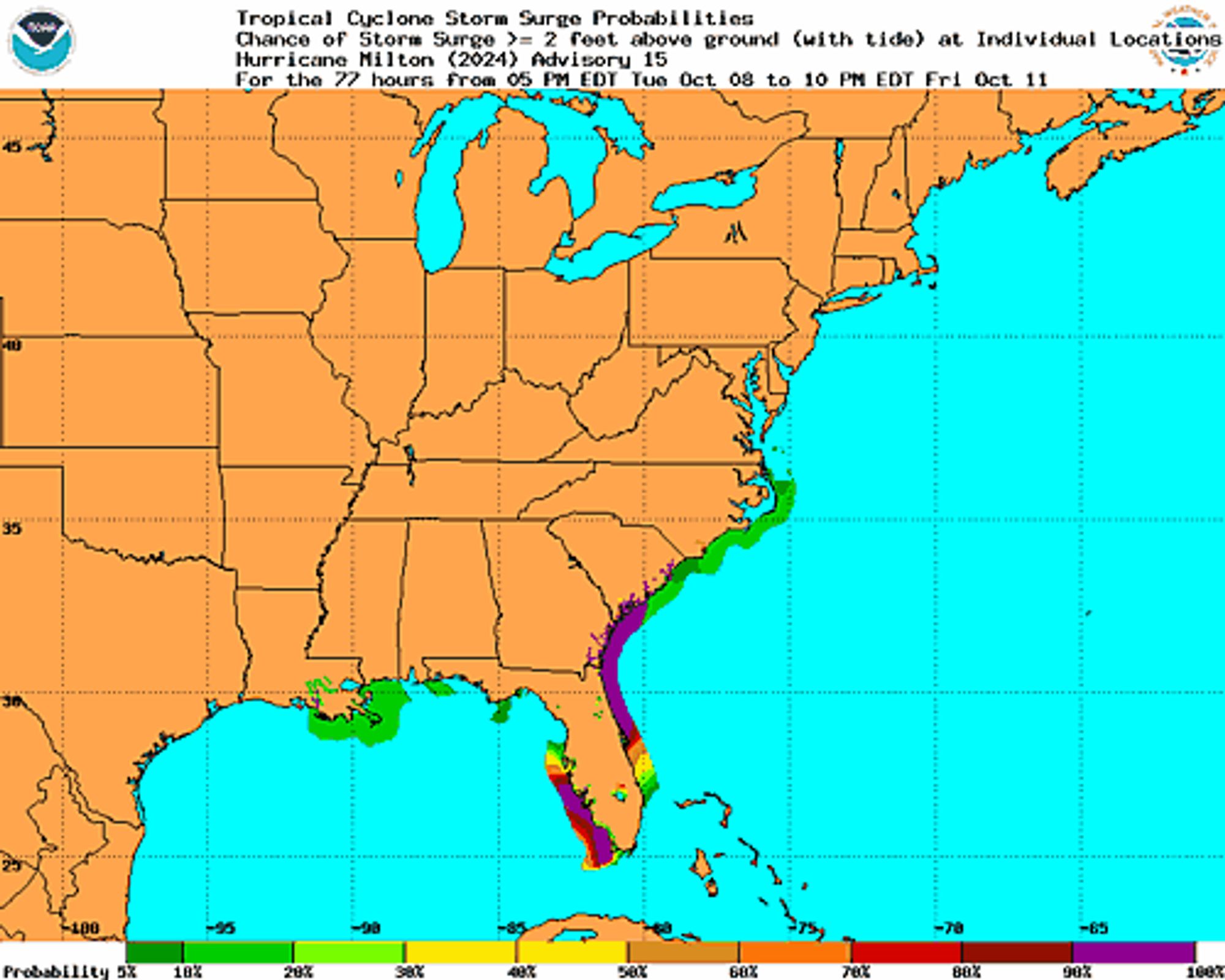
Atlantic Hurricane Leslie Advisory Number 27 issued at Wed, 09 Oct 2024 02:37:52 +0000 ...LESLIE A LITTLE STRONGER AND COULD INTENSIFY MORE OVER THE NEXT DAY OR SO... Additional Details Here.

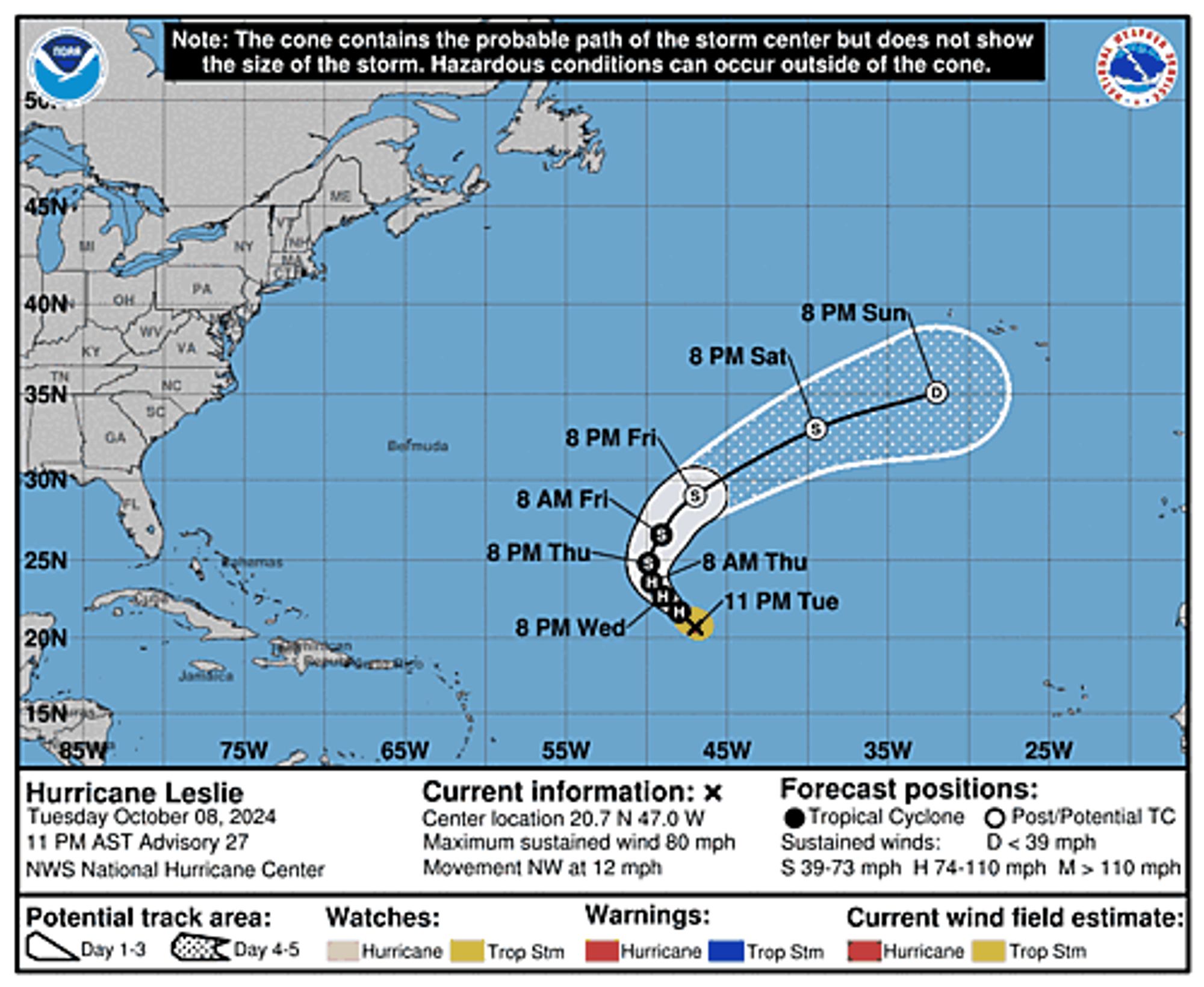
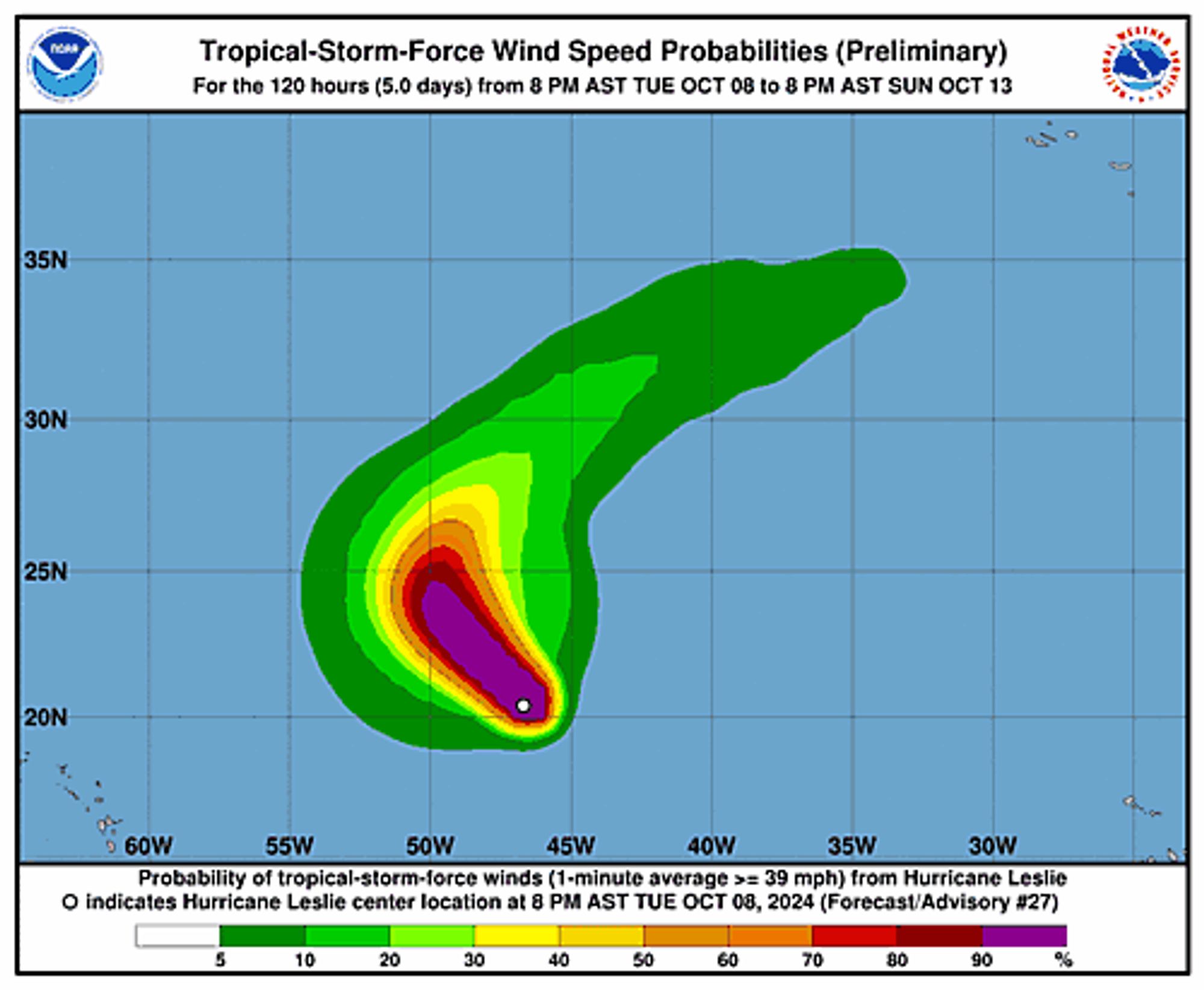
As part of scary season, I'll be sharing information about the evils and hazards of stairs. Did you know that in the United States ~12,000 people die by falling down stairs each year? #Falloween#DisabilityStatus
Beach Hazards Statement issued October 8 at 8:18PM EDT until October 9 at 8:00PM EDT by NWS Newport/Morehead City NC Additional Details Here.

